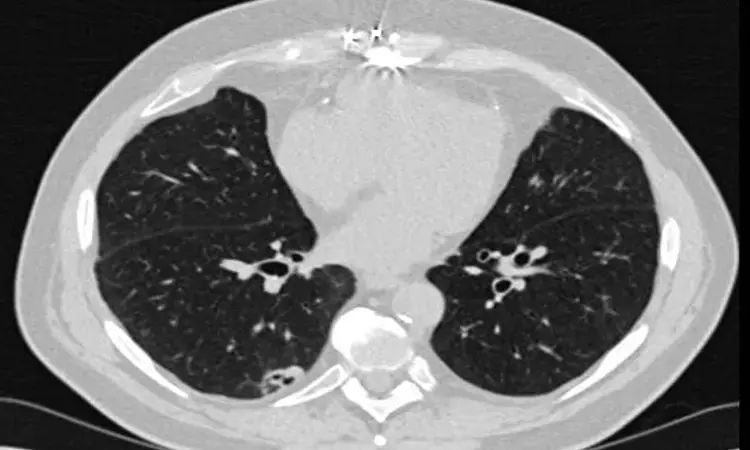- Home
- Medical news & Guidelines
- Anesthesiology
- Cardiology and CTVS
- Critical Care
- Dentistry
- Dermatology
- Diabetes and Endocrinology
- ENT
- Gastroenterology
- Medicine
- Nephrology
- Neurology
- Obstretics-Gynaecology
- Oncology
- Ophthalmology
- Orthopaedics
- Pediatrics-Neonatology
- Psychiatry
- Pulmonology
- Radiology
- Surgery
- Urology
- Laboratory Medicine
- Diet
- Nursing
- Paramedical
- Physiotherapy
- Health news
- Fact Check
- Bone Health Fact Check
- Brain Health Fact Check
- Cancer Related Fact Check
- Child Care Fact Check
- Dental and oral health fact check
- Diabetes and metabolic health fact check
- Diet and Nutrition Fact Check
- Eye and ENT Care Fact Check
- Fitness fact check
- Gut health fact check
- Heart health fact check
- Kidney health fact check
- Medical education fact check
- Men's health fact check
- Respiratory fact check
- Skin and hair care fact check
- Vaccine and Immunization fact check
- Women's health fact check
- AYUSH
- State News
- Andaman and Nicobar Islands
- Andhra Pradesh
- Arunachal Pradesh
- Assam
- Bihar
- Chandigarh
- Chattisgarh
- Dadra and Nagar Haveli
- Daman and Diu
- Delhi
- Goa
- Gujarat
- Haryana
- Himachal Pradesh
- Jammu & Kashmir
- Jharkhand
- Karnataka
- Kerala
- Ladakh
- Lakshadweep
- Madhya Pradesh
- Maharashtra
- Manipur
- Meghalaya
- Mizoram
- Nagaland
- Odisha
- Puducherry
- Punjab
- Rajasthan
- Sikkim
- Tamil Nadu
- Telangana
- Tripura
- Uttar Pradesh
- Uttrakhand
- West Bengal
- Medical Education
- Industry
Abnormal CT findings may persist for one year among COVID-19 patients after recovery

A new study published in The Chest Journal suggests that one year following recovery, COVID-19 patients frequently had persistent computed tomography (CT) abnormalities, particularly fibrotic alterations in severe/critical instances.
The 2019 coronavirus disease (COVID-19) frequently results in functional and radiological pulmonary consequences. Evidence on pulmonary consequences after a year, however, is scarce. In order to clarify (1) the proportion of remaining computed tomography abnormalities 1 year after COVID-19 recovery, (2) the characteristics of the remaining CT findings at 1-year follow-up, and (3) the relationship between the disease severity and time course of radiological sequelae, ATSUYUKI WATANABE and team conducted this study.
On February 25, 2022, searches in the databases PubMed and EMBASE included articles reporting CT findings at the 1-year follow-up. At a 1-year follow-up, researchers gathered data from the CT and pulmonary function tests (PFT). When available, the residual results from the mid-term (4–7 month) follow-up were also gathered. A one-group meta-analysis was used to examine the retrieved information on the CT and PFT results. They also examined the information in light of lung function, COVID-19 severity, and improvement rates.
The key findings of this study were:
1. There were 15 appropriate studies totaling 3,134 participants. 1,495 patients received CT exams a year following COVID-19, and 46.0% of them showed persistent CT abnormalities.
2. In 27.3% of the patients, respectively, ground-glass opacity (GGO) and fibrotic-like alterations were often seen.
3. While the fraction of GGO dropped from the mid-term to the long-term follow-up, the interlobular septal thickening, fibrotic-like alterations, and bronchiectasis did not.
4. Furthermore, compared to mild/moderate cases, the incidence of CT abnormalities at 1-year follow-up was greater in the severe/critical cases.
5. One year following COVID-19, patients who were severe or critical usually showed fibrotic-like alterations.
6. Regarding pulmonary function tests, after 1-year follow-up, 29.9% and 8.0% of the patients had decreased total lung capacity (TLC) and reduced diffusing capacity of the lung for carbon monoxide, respectively.
7. Severe/critical patients were more likely to have these persistent PFT abnormalities than mild/moderate ones.
In conclusion, the significant prevalence of pulmonary sequelae even a year following COVID-19 should be known to doctors. Because these sequelae might endure for a very long time, careful surveillance and longer follow-up times are necessary.
Reference:
WATANABE, A., SO, M., IWAGAMI, M., FUKUNAGA, K., TAKAGI, H., KABATA, H., & KUNO, T. (2022). ONE-YEAR FOLLOW-UP CT FINDINGS IN PATIENTS WITH COVID-19: A SYSTEMATIC REVIEW AND META-ANALYSIS. In Chest (Vol. 162, Issue 4, p. A311). Elsevier BV. https://doi.org/10.1016/j.chest.2022.08.240
Neuroscience Masters graduate
Jacinthlyn Sylvia, a Neuroscience Master's graduate from Chennai has worked extensively in deciphering the neurobiology of cognition and motor control in aging. She also has spread-out exposure to Neurosurgery from her Bachelor’s. She is currently involved in active Neuro-Oncology research. She is an upcoming neuroscientist with a fiery passion for writing. Her news cover at Medical Dialogues feature recent discoveries and updates from the healthcare and biomedical research fields. She can be reached at editorial@medicaldialogues.in
Dr Kamal Kant Kohli-MBBS, DTCD- a chest specialist with more than 30 years of practice and a flair for writing clinical articles, Dr Kamal Kant Kohli joined Medical Dialogues as a Chief Editor of Medical News. Besides writing articles, as an editor, he proofreads and verifies all the medical content published on Medical Dialogues including those coming from journals, studies,medical conferences,guidelines etc. Email: drkohli@medicaldialogues.in. Contact no. 011-43720751


